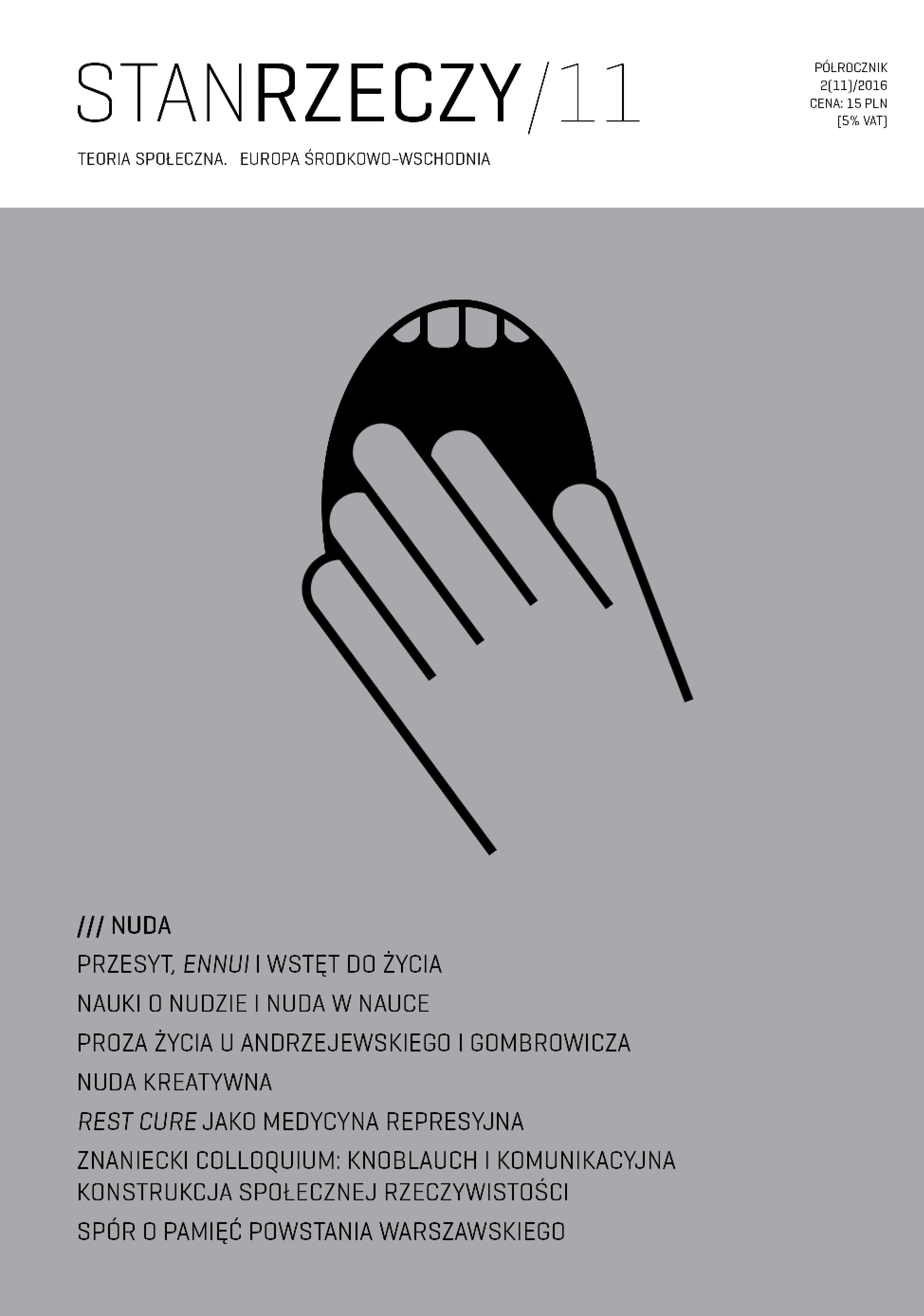Rest cure – XIX-wieczna terapia nudą Silasa Weira Mitchella w opowiadaniu Żółta tapeta Charlotte Perkins Gilman
“Rest Cure” – The Nineteenth-Century Boredom Therapy of Silas Weir Mitchell in Charlotte Perkins Gilman’s Story The Yellow Wallpaper
Author(s): Beata KoperSubject(s): Studies of Literature, Sociology
Published by: Wydział Socjologii Uniwersytetu Warszawskiego
Keywords: boredom;„The Yellow Wallpaper”;Rest Cure;
Summary/Abstract: This article consists of a cultural analysis of the nineteenth-century influence that forced female patients diagnosed with neurasthenia to rest from intellectual and domestic activity. The history of Weir Mitchell’s “rest cure”, which was designed for women suffering from nerves, is the context for an interpretation of C. P. Gilman’s short story “The Yellow Wallpaper”. The theory of illness proposed by the famous medical doctor was evident¬ly correlated with gender. Although the description of the therapy (rest, diet, massages) sounds trivial, Mitchell became the evil character of the American writer’s tale. The story shows how a strict “boredom therapy” drives the narrator to madness. The rest cure reveals the repressive side of medicine, and the resultant boredom – a pivotal point of the treatment – is a boredom that kills. There is no room here for rest in the positive sense; there is only boredom, which in this case, has exclusively negative connota¬tions.
Journal: Stan Rzeczy
- Issue Year: 2016
- Issue No: 11
- Page Range: 103-118
- Page Count: 16
- Language: Polish

